Housing includes any kind of building that provides shelter for people. In a broader sense, it includes problems of city planning, and community services to provide healthy and safe living conditions.

Standard housing provides safe, sanitary, comfortable dwellings with enough space for every member of a family to have some privacy and freedom. It has proper heating and ventilation to help people maintain good health. Standard housing includes hot and cold running water and a well-planned sewage disposal system. It also provides electric light at night and lets in plenty of daylight. Specific criteria for standard housing vary by culture and country. In many countries, local building and housing codes and zoning laws ensure that most housing is safe, sanitary, and comfortable.
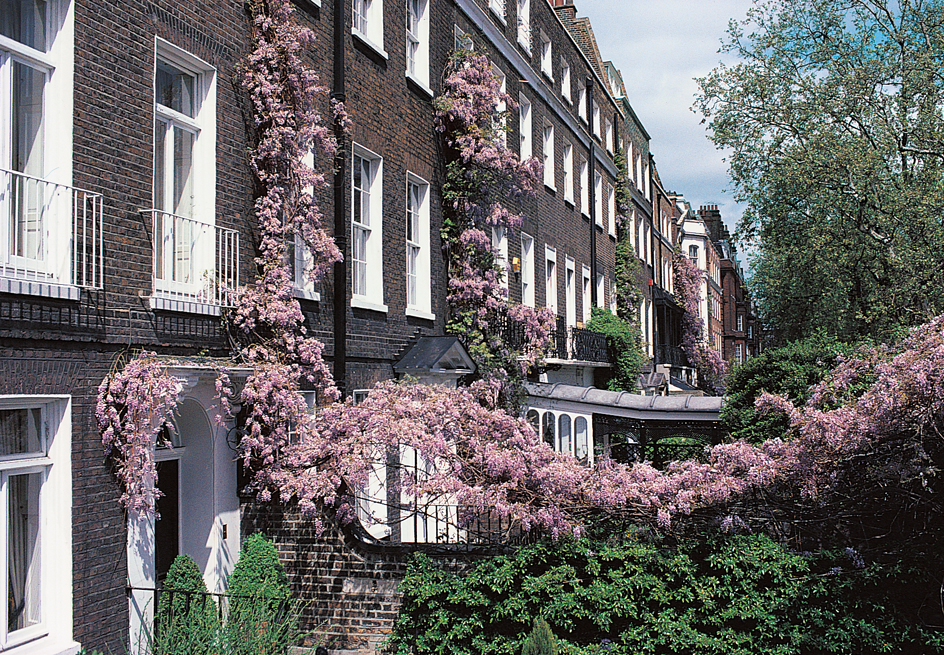
Poorly constructed, run-down, unsanitary, or overcrowded dwellings are called substandard housing. Using this definition, many of the world’s people live in substandard housing. Throughout Asia, Africa, and Latin America, millions live in crude dwellings that barely provide shelter. In more developed countries, finding standard housing that is affordable is often difficult for low-, moderate-, and middle-income households. A household includes all people living in one housing unit. While the overall quality of housing in developed countries has improved since the late 1950’s, numerous households remain in substandard dwellings.
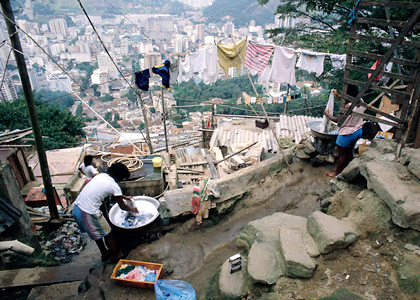
A decaying neighborhood with many substandard buildings is sometimes called a slum. Slums are found in older, central areas of cities and in informal settlements that lack basic water, sewerage, and electrical services. Informal settlements are groups of dwellings built without government authorization, usually on the edges of cities. Most occupants of slums have low incomes, and their dwellings are often overcrowded. Most slums have high rates of illness, disease, and crime. Most slums also have inferior community services, including poor schools, inadequate police and fire protection, infrequent garbage collection, and too few parks and playgrounds. Some financial institutions refuse to make mortgage or home-improvement loans in neighborhoods they consider to be declining. This practice may speed the development of slums by preventing the purchase or repair of houses in such neighborhoods. In the United States, laws exist to discourage these discriminatory practices.
Prejudice and discrimination still prevent many members of minority groups from having adequate housing. In many Western countries, nonwhites, Jews, and immigrants have been forced to live in slums or segregated areas known as ghettos. Increasingly, legislation has been used to try to eliminate such conditions and to make good housing available to all.
Kinds of housing
The chief types of housing units in the United States include houses, apartment buildings, hotels, motels, and mobile homes (trailers). On average, three or fewer persons live in each unit. Most dwellings in the United States are permanent buildings made of lumber, brick, or concrete. While mobile homes can be relocated after initial placement, they are generally designed for permanent living at one location.

A majority of the households in the United States live in single-family homes. About 10 percent live in buildings of two to four apartments or in commercial buildings that include apartments. About 20 percent of America’s households live in apartment buildings with five or more apartments. Cities have more apartment buildings than do small towns and suburban areas, which have mostly single-family homes.
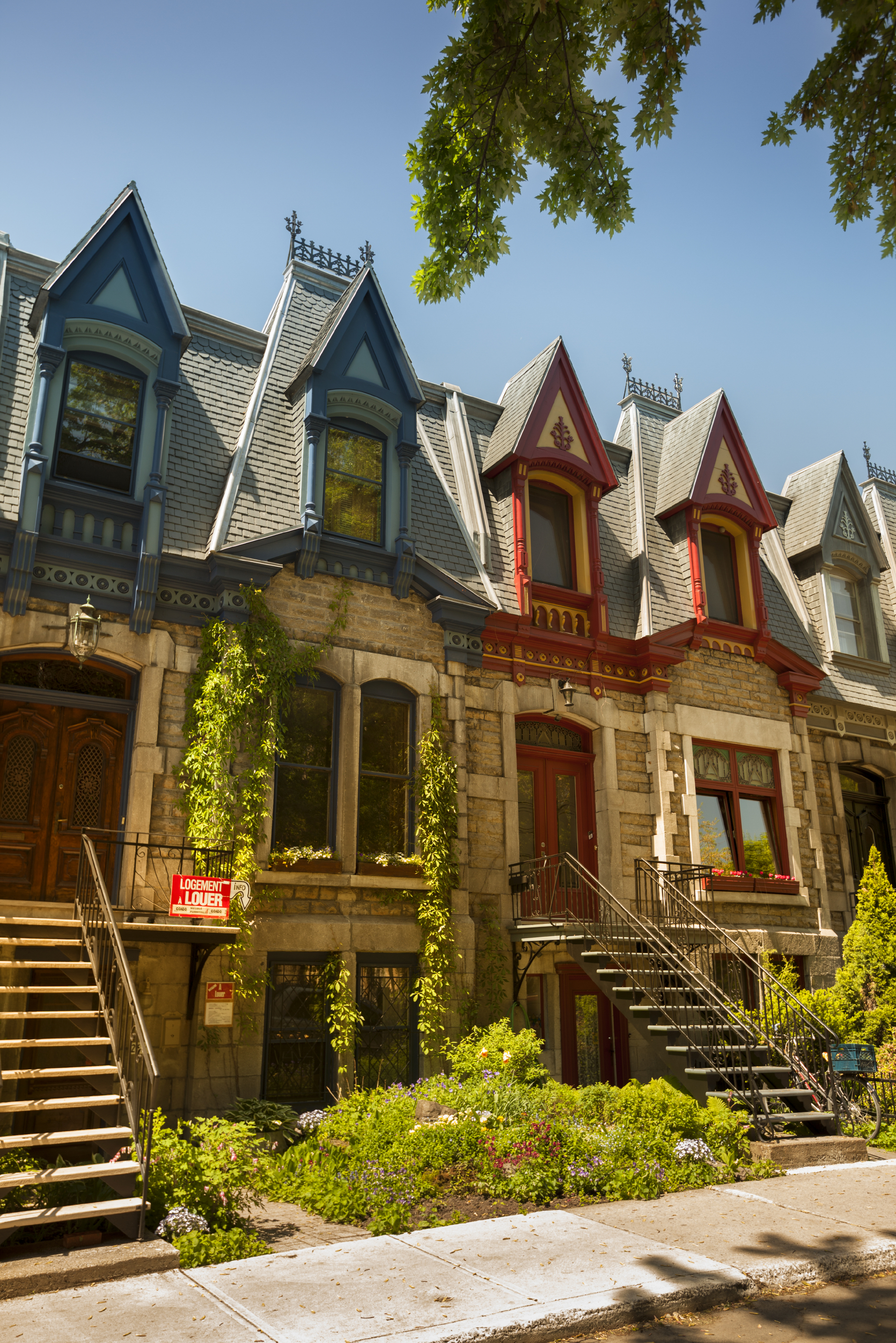
Baltimore, Philadelphia, and some other cities have many row houses. Most row houses, sometimes called town houses, are a series of single-family houses with at least one common wall between neighboring houses. A duplex is a building with two units, either side by side or one above the other.
Private housing
Home ownership is a goal for many Americans. Today, a majority of the nation’s households own their own homes. In the United States, most home buyers make a down payment on part of the purchase price and borrow the rest of the money through a mortgage loan.
Unlike most other countries, the United States provides an important incentive to encourage people to become the owners of their homes. It does this by allowing homeowners to deduct the interest they pay on their mortgage loan when determining their taxable income. This allowance is a significant form of government subsidy to homeowners.
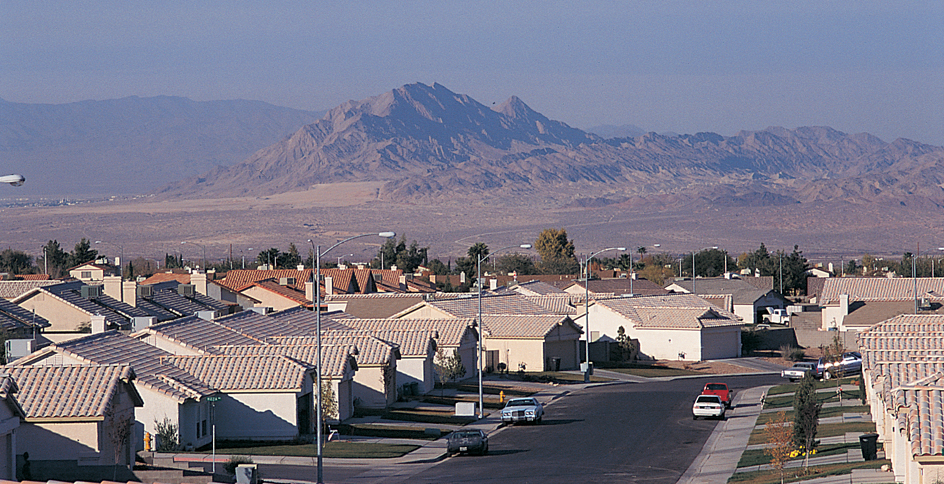
Since the mid-1900’s, there has been a great need for housing. Speculative builders have mass-produced housing in many large developments to meet the need for housing. These builders buy land and then build and sell homes on it. Most of the homes are built to suit what is regarded as the average family’s desires. Custom-built homes (homes built according to the owner’s plan) are built by contract builders on the owner’s land. Throughout the years, as households in the United States have become more diverse, speculative builders have begun to produce more varied housing to meet the needs of different households.
Private housing projects
are groups of buildings erected at the same time for several hundred or several thousand families. A housing project may have groups of small houses, row houses, or apartment buildings, or a mix of all three, similarly built to reduce costs.
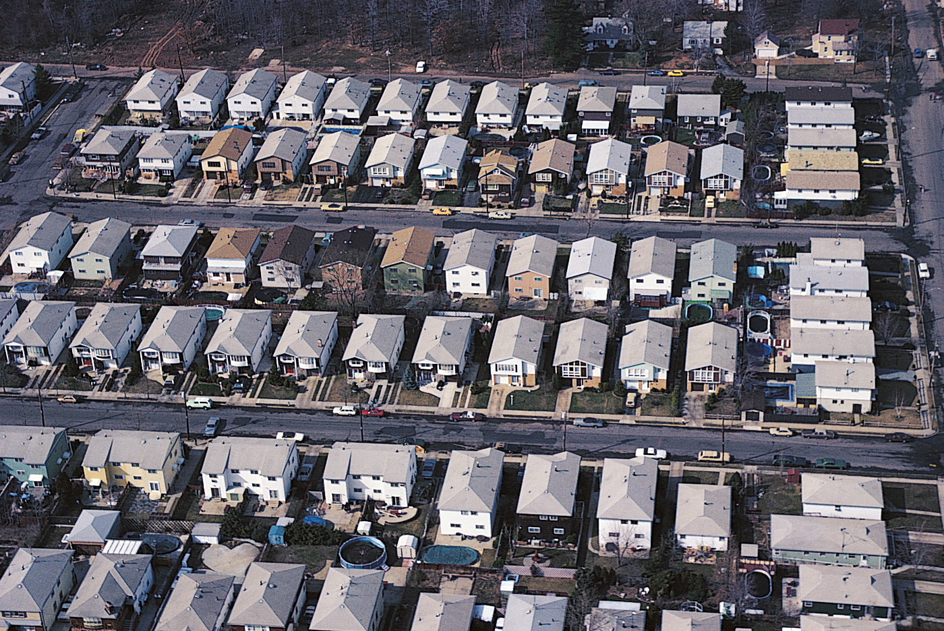
Suburban developments.
Most housing erected by individuals or private contractors is built on vacant land on the outskirts of cities and towns. Vacant land generally costs less in outlying areas, and there are no buildings that must be destroyed before construction can begin. Most of these new dwellings are one-family houses and are bought by the families who move into them. Every year, thousands of families move into newly built suburban homes. Entire new communities have been built with shops, motion-picture theaters, schools, churches, and parks.

New towns.
In some cases, the growth of cities around the world has taken the form of developments called new towns. Such planned communities are more complex than are suburban developments. Unlike most residential suburbs, new towns include factories and industries, and many of the residents both work and live in the communities.
Cooperative housing.
People sometimes form nonprofit corporations to plan, finance, build, and manage the apartment buildings or houses in which they live. When a cooperative builds or buys an apartment building, individuals buy shares in the corporation. The shares entitle them to occupy apartments but not to own the units. They share the expense of maintenance, repair, and improvement for the entire building.
Condominium housing
resembles cooperative housing, with one important difference. In condominium housing, the occupants each own their own dwelling units, and each has a share in the parts of the building used by all occupants. They share expenses only for those parts of the building and those services that all of them use. If one or more occupants fail to meet their financial obligations toward their own units, the other occupants are not affected. In cooperative housing, all shareholders are responsible if some occupants fail to meet their financial obligations.
Farm housing.
About 20 percent of homes in the United States are in rural areas. However, less than 1 percent of all homes in the United States are farm homes. Before the 1930’s, most farm homes lacked electric power and indoor plumbing. The Rural Electrification Act of 1936 provided for federal loans to companies, cities, and other groups for building rural power lines (see Rural Electrification Administration (REA)). By the late 1960’s, almost all U.S. farms had electric power and telephones, and most had indoor plumbing.
Affordable housing
When housing costs increase faster than household incomes, housing becomes less affordable. Housing affordability is a concern for households with fewer financial resources and in locations where housing costs are rising rapidly. Since the 1980’s, housing affordability has been the principal housing problem of the United States. Many people in the United States cannot afford the rents or mortgage payments for standard housing.
To determine housing affordability, the federal government and mortgage lenders use about 30 percent of a household’s income as a maximum for what housing should cost each month. To address problems of housing affordability, federal, state, and city governments have established programs to provide assistance for housing. Most federal housing aid is administered by the Department of Housing and Urban Development (HUD).
In the past, most affordable housing was provided through public housing (housing owned by a public agency). Since 1996, however, no federal government funds have been supplied to construct new public housing units in the United States. But federal, state, and local governments have provided funds to subsidize production of affordable housing for low-, moderate-, and middle-income households by for-profit and nonprofit housing developers.
Housing subsidy programs
encourage the development of private housing for households paying more than 30 percent of their income for housing. Under one of these programs, Housing Choice Vouchers, HUD provides cash allowances to enable low-income families to rent housing in the private market. Families receive an allowance to make up the difference between 30 percent of their income and the actual cost of housing in their area.
Public housing
for low-income families has traditionally been provided by city housing authorities (organizations). These authorities are established under state laws that also permit their participation in federally aided programs. Most local housing authorities are composed of commissioners appointed by the mayor or the local governing body. The authority determines the need for public housing and then plans, develops, and manages the projects. In many cities, the demand for public housing exceeds the supply.
Public housing may be provided in several ways. The authority may build new housing or buy it from a developer. It may buy existing housing and restore it to good condition. Or it may lease existing housing.
Other programs.
Federal, state, and local government agencies provide grants, subsidized loans, and tax credits to for-profit and nonprofit organizations to develop affordable housing. Several federal programs make special provisions for elderly people with low incomes. These programs include public housing, mortgage insurance, and direct loans for nonprofit rental housing. Some states also have housing programs for the elderly.
History
During colonial times, most people in the United States lived on farms or in small towns. As late as 1840, only about 8 percent of the people lived in cities or towns with populations of more than 8,000. Today, a majority of people live in urban areas.
The Industrial Revolution,
which began in the 1700’s, produced much unplanned city development. Thousands of people moved to cities to find work, and builders put up almost any kind of housing to meet the demand. Businesses, factories, and houses stood side by side on narrow streets. Blocks of tenement houses appeared in large cities of the United States, Britain, France, and other industrial countries. The first housing law in the United States was passed by New York City in 1867. The law set minimum ventilation, sanitation, and safety requirements for tenements.
By the 1900’s, a world housing shortage existed, chiefly because of the population increase and the concentration of the population in urban areas. The expansion of industry, a shortage of construction workers, and a lack of money for new housing also helped cause the housing shortage.
Housing Since 1900.
New housing construction fell to inadequate levels during World War I (1914-1918) and World War II (1939-1945) because builders lacked materials. During the Great Depression of the 1930’s, people had little money for building. From the 1940’s to the 1960’s, more and more families moved from rural areas to cities and military personnel returned from war, causing serious housing shortages in spite of increased housing construction.
The United States
had a prosperous period and a building boom in the 1920’s. The Great Depression of the 1930’s led the government to take an active part in housing. The Public Works Administration (PWA) built 59 projects in 36 cities. The Federal Housing Administration (FHA), created under the National Housing Act of 1934, established the amortized mortgage loan. This type of mortgage loan allows a home buyer to borrow money from a bank that can be repaid in monthly installments, rather than in a lump sum. The United States Housing Act of 1937 set up a U.S. Housing Authority to help build public housing for low-income families. Federal housing activities were unified under the National Housing Agency in 1942 and, after 1947, under the Housing and Home Finance Agency. The Farmers Home Administration was established in 1946 to provide loans for rural housing. That administration operated until 1994, when the new Rural Housing and Community Development Service took over responsibility for making such loans.
Housing construction increased rapidly after World War II. The high point came in 1950, when builders constructed almost 2 million new units. By the late 1960’s, over half of all the homes in the United States had been built since 1945.

In 1965, the Department of Housing and Urban Development was created as an executive department of the United States government. The department seeks to improve urban housing. In April 1968, Congress passed the Civil Rights Act of 1968, also known in part as the Fair Housing Act of 1968. The Fair Housing Act prohibits discrimination on the basis of race, color, or religion in the sale or rental of most housing. The bill was expanded in 1988 to eliminate housing discrimination for persons with disabilities and families with children. In June 1968, the Supreme Court of the United States ruled that the government had the authority to enforce housing-discrimination laws even in cases involving only private individuals. Earlier, such laws had been applied only to cases involving government agencies. During the 1960’s, many states and cities passed fair housing laws. But despite these laws, most communities in the United States are still largely racially segregated.
Condominiums became increasingly popular in the United States during the 1970’s. Many rental apartment buildings were purchased by developers and turned into condominiums. This trend reduced the number of available rental units and led to an increased demand for such units, resulting in higher rents.
During the early 1980’s, the federal government ordered a stop to construction of nearly all new public housing, though a few projects continued. This action, designed to reduce federal spending and future obligations, worsened the existing shortage of housing for low-income people. In the mid-1980’s, a lowering of interest rates revived a housing industry troubled by previous high rates of interest. By 1990, however, the lack of government subsidy programs had placed about a third of Americans out of the housing market. Many U.S. housing experts believe that affordable housing has become a major national need. In 1990, Congress passed a bill to increase financial assistance to poor people who are seeking to become homeowners. In 2015, the Supreme Court ruled that housing policies and practices with discriminatory outcomes can be challenged under the Fair Housing Act, even if there was no intent to discriminate.
Canada.
Private citizens build most housing in Canada. The Canada Mortgage and Housing Corporation, a government agency similar to the FHA, insures mortgage loans. Canada built about 3 million new housing units from the mid-1940’s to the late 1960’s.
Other countries.
Millions of homes were damaged or destroyed in Europe during World War II. Since then, most of the housing built in Europe consists of multifamily apartments. The apartments are generally small by U.S. standards. But they provide hot and cold running water, heat, electric power, and separate rooms for parents and children of each sex. Many people in almost every class, from unskilled worker to professional, live in government housing in Europe.
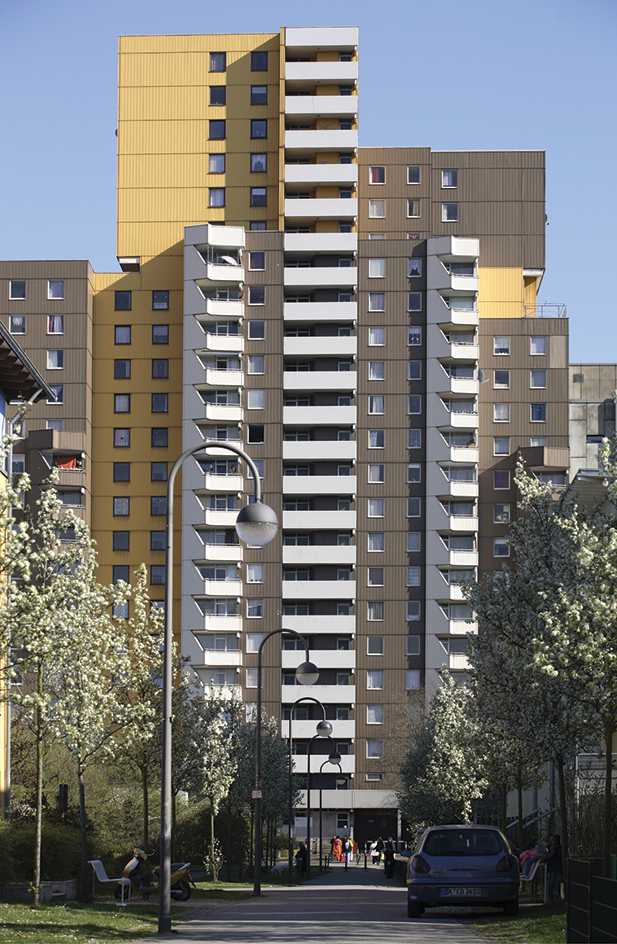
Most of China’s people live in the eastern part of the country. The soil in this region is fertile, and so housing competes for space with valuable farmland. As a result of housing reforms of the 1980’s, much new housing was built, but severe shortages of affordable housing still existed in China’s cities. Although much of China’s new urban housing is in high-rise buildings, the typical three-person Chinese household lives in a two- or three-bedroom unit, slightly smaller than average apartments found in U.S. cities. Units in most of China’s urban housing include one or two bathrooms, a kitchen and living room, and cold running water. China has also experienced a suburban housing boom since the late 1990’s. Some of China’s suburban housing is single-family development. While China’s new housing is somewhat below American and Western European standards, substantial gains toward improved housing have been made.
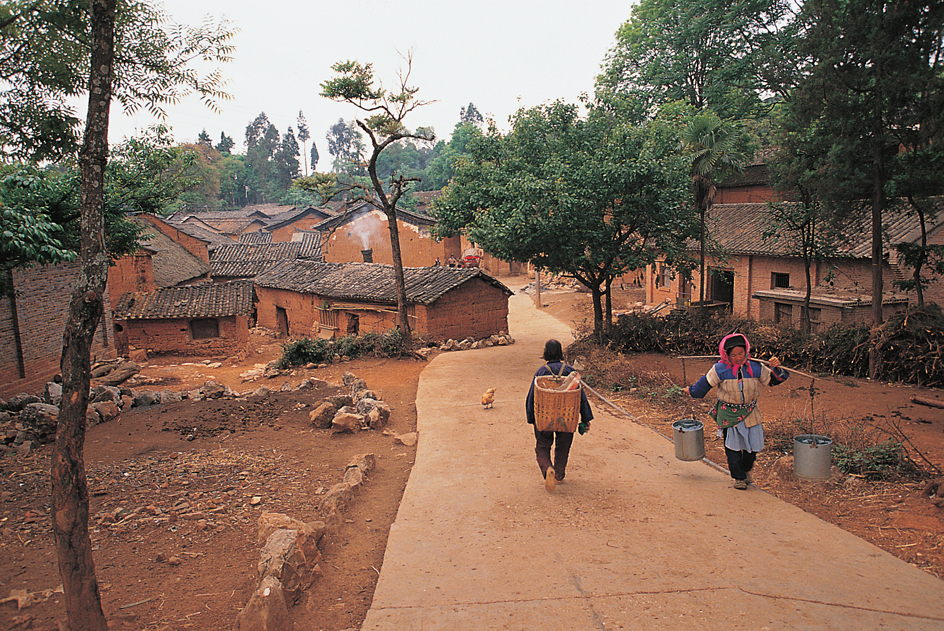
Sustainable housing.
In the early 2000’s, concern about global warming and sustainability has caused people in many countries to examine housing’s contribution to these issues. Global warming refers to an increase in the average temperature of Earth’s surface since the mid-1800’s. Sustainability involves environmentally sound practices that protect natural resources. Because of such concern, for example, housing developments in the United States began to address sustainability through designs to reduce energy and water consumption, and to incorporate renewable materials. In 2006, the British government announced its intention that by 2016 all new housing built in the United Kingdom would be zero carbon housing, or housing for which net carbon emissions are zero. Scientists believe carbon emissions are the primary cause of global warming. In 2002, the Beddington Zero housing project was completed in Surrey, England. It was the first carbon-neutral community in the United Kingdom.

